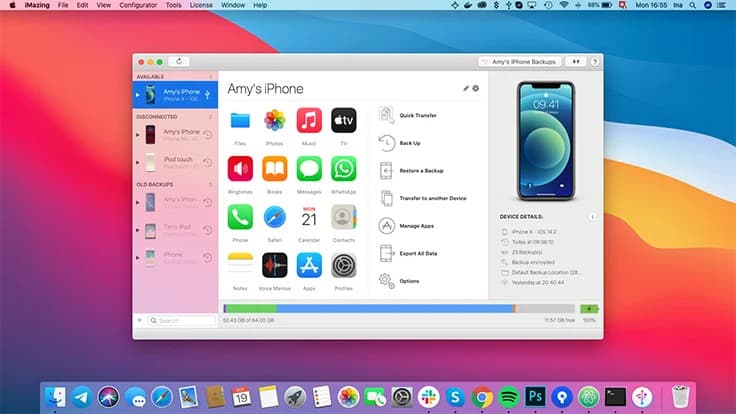Jan 19, 2021 If none of the emulators seem to be doing the job for you, currently the best way to run iOS apps on a computer is just by using the new Apple M1 MacBooks and Mac Mini. These devices run on Apple’s new ARM chipsets and they can run iPhone apps with ease. I want to run an iOS app on an emulator on my Mac There is no iOS emulator in existence. There's an iOS simulator, available only for macOS. In order to do that, I have to get the app as a a.zip or.tar.gz file containing the compressed.app bundle.
- Emulate Ios Apps On Macbook
- Emulate Iphone On Mac
- Iphone Simulator Mac
- Emulate Ios Apps On Mac Computer
- Emulate Ios Apps On Mac Download
- Emulate Ios Apps On Mac Mini
- Emulate Ios Apps On Mac Os
The Remoted iOS Simulator for Windows allows you to test your apps on aniOS simulator displayed in Windows alongside Visual Studio 2019 and Visual Studio 2017.
Getting started

The Remoted iOS Simulator for Windows is installed automatically as partof Xamarin in Visual Studio 2019 and Visual Studio 2017. To use it, follow these steps:
Emulate Ios Apps On Macbook
- Pair Visual Studio 2019 to a Mac Build host.
- In Visual Studio, start debugging an iOS or tvOS project. TheRemoted iOS Simulator for Windows will appear on your Windows machine.
Watch this video for a step-by-step guide.
Emulate Iphone On Mac
Simulator window
The toolbar at the top of the simulator's window contains a number of useful buttons:
Home – Simulates the home button on an iOS device.
Lock – Locks the simulator (swipe to unlock).
Screenshot – Saves a screenshot of the simulator (stored in PicturesXamariniOS Simulator).
Settings – Displays keyboard, location, and other settings.
Other options – Brings up various simulator options such as rotation, shake gestures, and Touch ID.
Settings
Clicking the toolbar's gear icon opens the Settings window:
These settings allow you to enable the hardware keyboard, choose alocation that the device should report (static and moving locations areboth supported), enable Touch ID, and reset the content and settings forthe simulator.
Other options
The toolbar's ellipsis button reveals other options such as rotation,shake gestures, and rebooting. These same options can be viewed as a listby right-clicking anywhere in the simulator's window:
Touchscreen support
Most modern Windows computers have touch screens. Since the Remoted iOSSimulator for Windows supports touch interactions, you can test your appwith the same pinch, swipe, and multi-finger touch gestures that you usewith physical iOS devices.
Similarly, the Remoted iOS Simulator for Windows treats Windows Stylusinput as Apple Pencil input.
Sound handling
Sounds played by the simulator will come from the host Mac's speakers.iOS sounds are not heard on the Windows computer.
Disabling the Remoted iOS Simulator for Windows
Iphone Simulator Mac
To disable the Remoted iOS Simulator for Windows, navigate toTools > Options > Xamarin > iOS Settings and uncheckRemote Simulator to Windows.
Emulate Ios Apps On Mac Computer
With this option disabled, debugging opens the iOS Simulator on the connected Mac build host.
Troubleshooting
Emulate Ios Apps On Mac Download
If you experience issues with the Remoted iOS Simulator, you can view the logs in these locations:
Emulate Ios Apps On Mac Mini
- Mac –
~/Library/Logs/Xamarin/Simulator.Server - Windows –
%LOCALAPPDATA%XamarinLogsXamarin.Simulator
Emulate Ios Apps On Mac Os
If you report a problem in Visual Studio, attaching these logs might be helpful (there are options to keep uploads private).